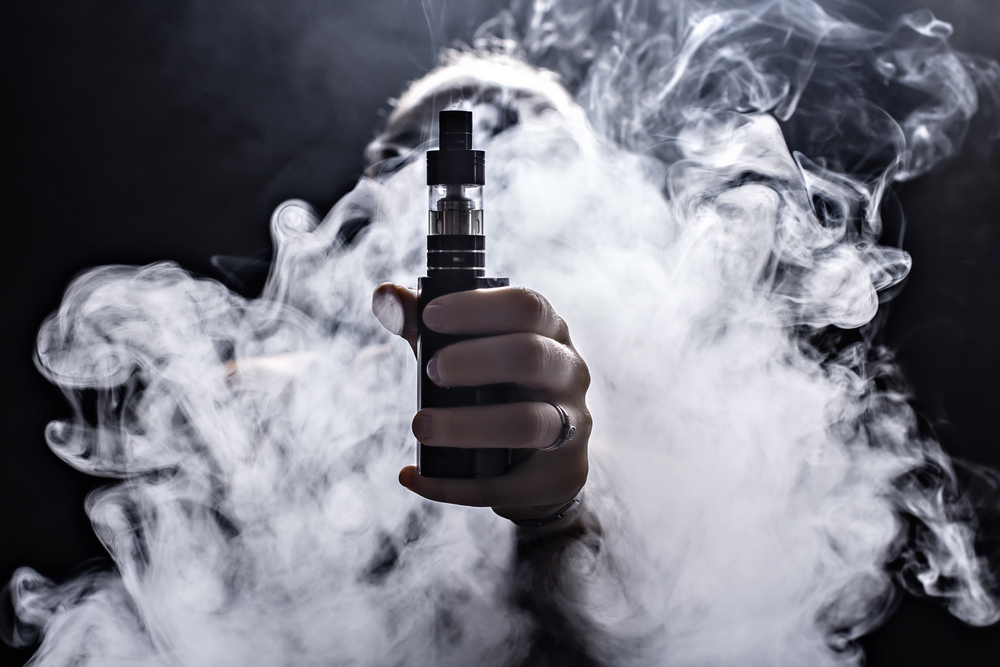Clearing the Air: 10 Essential Facts About Vaping

Welcome to “Clearing the Air: 10 Essential Facts About Vaping,” a comprehensive guide designed to illuminate the often murky discussions surrounding vaping. In the past few years, vaping has surged in popularity, becoming a cultural phenomenon that sits at the crossroads of public health debate, regulatory scrutiny, and technological innovation.
This phenomenon involves inhaling vapor from electronic cigarettes (e-cigarettes) or other vaping devices, a practice hailed by some as a safer alternative to traditional smoking but criticized by others for its health risks and appeal among younger demographics.
The purpose of this blog is twofold. First, to provide a clear, unbiased overview of what vaping is and how it differs fundamentally from traditional cigarette smoking. And second, to explore the various dimensions of vaping—ranging from its health implications to its environmental impact, from legal regulations to cultural phenomena—offering readers a holistic understanding of its role in society today.
Whether you’re a concerned parent, a policy maker, a health enthusiast, or simply curious, this series aims to equip you with essential insights and foster informed conversations about the future of vaping. Join us as we clear the air on this contemporary issue.
1. What is Vaping?
Vaping, at its core, is the act of inhaling and exhaling an aerosol, often referred to as vapor, which is produced by an e-cigarette or another vaping device.
Unlike traditional smoking, which burns tobacco leaves to release smoke, vaping uses heat from a battery-powered element to vaporize a special liquid solution. This liquid, commonly called e-liquid or vape juice, typically contains nicotine, propylene glycol or vegetable glycerin, and flavorings.
The fundamental difference between vaping and smoking lies in the absence of combustion with vaping. Traditional smoking involves combustion, which releases a variety of harmful chemicals and tar that are associated with a myriad of health risks.
Vaping, in contrast, is marketed as a less harmful alternative because it doesn’t produce tar or carbon monoxide, two of the most damaging components in tobacco smoke. However, this doesn’t mean vaping is without risks, but it does highlight its distinction from conventional smoking practices.
2. The Rise of Vaping
The rise of vaping in recent years has been nothing short of meteoric, a trend underscored by compelling statistics that highlight its prevalence among different age groups. Notably, younger demographics, especially those between the ages of 18 and 24, are increasingly drawn to vaping, accounting for a significant portion of its users.
Research indicates a sharp uptick in e-cigarette usage within this age group, with many citing flavors and perceived harm reduction as key factors behind their preference for vaping over traditional smoking.
Meanwhile, older age groups, though less represented, still show a growing interest in vaping, often motivated by the desire to quit smoking.
This shift in smoking habits across generations underscores the evolving landscape of nicotine consumption, propelling vaping into the limelight as a cultural and societal phenomenon that continues to expand its influence.
3. The Ingredients of Vape Juice
Diving into the composition of vape juice, an essential component of vaping, reveals a concoction of several primary ingredients that vary in formulation from one brand to another.
Commonly found elements include nicotine, which is responsible for the addictive quality of vaping, notwithstanding the versions available without nicotine.
Another core ingredient is propylene glycol (PG) or vegetable glycerin (VG), which serves as the base that carries the nicotine and flavors; PG provides a throat hit similar to that of smoking a tobacco cigarette, while VG is known for producing denser vapor clouds.
Additionally, vape juices frequently contain artificial flavors to create the vast array of taste profiles that attract users, from fruity to dessert-like essences. However, while these ingredients are generally recognized as safe for consumption, their effects when inhaled over long periods remain a topic of ongoing research and debate within the scientific community.
This examination of e-liquid components underscores the complex nature of vaping products and highlights the importance of informed choices in the context of vaping practices.
4. Health Impacts
The discourse on the health impacts of vaping is critical and multifaceted, encompassing both short-term and long-term effects. In the short term, users may experience throat irritation, dry mouth, and coughing, which are among the immediate reactions attributed to the inhalation of vapor.
However, it’s the long-term health consequences that elicit greater concern among healthcare professionals and researchers. Studies suggest a correlation between prolonged vaping and increased risks of cardiovascular diseases, respiratory disorders, and, in some cases, issues related to lung health.
Despite being marketed as a safer alternative to traditional smoking, the presence of nicotine in most e-liquids raises substantial concerns regarding addiction and its associated health risks.
Nicotine’s role in elevating blood pressure and spike in adrenaline levels further complicates the narrative, suggesting that the health ramifications of vaping could be more profound than initially perceived.
Hence, while vaping might reduce exposure to some of the harmful chemicals found in cigarette smoke, it introduces its own set of health implications, accentuating the need for ongoing research and public dialogue on its safety.
5. Vaping and Smoking Cessation
In the debate surrounding smoking cessation, vaping is often positioned at the heart of discussions as a potentially effective tool for quitting traditional cigarettes.
The examination of vaping as a method to quit smoking is a topic of much interest and study within the medical and public health communities.
Proponents argue that by satisfying the oral fixation and nicotine dependency without the harmful tar and carcinogens of tobacco smoke, e-cigarettes offer a less damaging alternative for those looking to break free from the grip of smoking.
Recent studies have begun to support this notion, suggesting that individuals who turn to vaping as a cessation aid are more likely to reduce their smoking frequency or quit altogether compared to those who do not vape. However, this approach is not without its controversies.
Critics raise concerns about the long-term health effects of vaping, the potential for a new addiction to replace the old, and the lack of regulatory standards in the rapidly evolving vaping market.
Despite these challenges, the role of vaping in smoking cessation continues to be a pivotal area of research, with the ultimate goal of understanding whether e-cigarettes can serve as a bridge to a smoke-free life or if they are just a mirage in the desert of addiction recovery efforts.
6. Regulations Surrounding Vaping
The landscape of legal regulations surrounding vaping varies significantly across different regions, reflecting a global patchwork of policies designed to address the public health implications of e-cigarettes.
In the United States, for example, the FDA has implemented rules that require manufacturers to submit their products for approval before marketing, focusing on reducing youth access to vaping products.
Across the Atlantic, the European Union has taken a somewhat different approach with its Tobacco Products Directive, which sets limits on nicotine strength and volume, mandates child-resistant packaging, and requires clear health warnings on products.
Meanwhile, countries like Australia have adopted even stricter measures, allowing the sale of e-cigarettes only for therapeutic purposes, such as smoking cessation aids, subject to approval by the Therapeutic Goods Administration.
This divergence in regulatory frameworks highlights the ongoing debate over vaping’s role in society and the balancing act between harm reduction for smokers and preventing potential health risks for new users, particularly among adolescents.
The global discourse on vaping continues to evolve, as lawmakers strive to keep pace with emerging research and the rapidly growing popularity of e-cigarettes.
7. The Environmental Impact
The discussion around vaping extends beyond health implications and smoking cessation; its environmental footprint raises significant concerns, warranting closer scrutiny.
The production, use, and disposal of vaping devices and accessories contribute to environmental degradation in more ways than one. Traditional single-use e-cigarettes, for instance, accumulate as electronic waste, adding to the already critical global e-waste challenge.
Many of these products contain lithium batteries, plastics, and metals that, if not disposed of properly, can leak hazardous substances into soil and water, harming ecosystems.
Furthermore, the manufacturing process of vaping devices and e-liquids involves resource-intensive practices, including the extraction of nicotine and the production of synthetic flavors, which have their own environmental costs.
The rise of vaping, therefore, adds another layer to the conversation on sustainable consumption and waste management, urging consumers and regulators alike to consider the long-term ecological impact of this modern smoking alternative.
8. Misconceptions About Vaping
Amidst the swirling clouds of discourse surrounding vaping, several misconceptions obscure the public’s understanding of its true impact. A prevalent myth is that e-cigarettes emit nothing more than harmless water vapor, when, in reality, the vapor contains nicotine along with various chemicals and particulate matters which can be detrimental to both users and bystanders.
Furthermore, the belief that vaping serves solely as a gateway to quitting smoking ignores the potential for new dependencies, particularly among youths who might have never picked up a traditional cigarette.
Another widespread fallacy is the notion that all vaping products are inherently safer than traditional tobacco products due to fewer chemicals, disregarding the lack of long-term data on the effects of inhaling these substances.
Addressing these myths head-on not only clarifies the narrative surrounding e-cigarettes but also emphasizes the importance of informed decision-making in the face of evolving public health information.
9. The Cost of Vaping
The financial implications of vaping, particularly when compared to traditional smoking, present a nuanced picture that deserves a closer look.
On the surface, the initial cost of purchasing a vaping device might seem steep compared to buying a pack of cigarettes. However, over the long term, e-cigarettes can prove to be more cost-effective.
The ongoing expense of vaping comes from the purchase of e-liquid and occasional replacement parts for the device, which, depending on one’s vaping habits, might still amount to less than the recurring cost of cigarette packs.
It’s important to note, though, that the cost-efficiency of vaping over smoking varies widely depending on individual usage patterns, the type of vaping device, and local prices for cigarettes and vaping supplies.
Despite the potential for savings, the decision to switch should not be driven by cost alone, considering the health implications and addiction potential of both vaping and traditional smoking.
Understanding the economic dynamics between these two options is essential for anyone considering vaping either as a cheaper alternative to smoking or as a method to quit smoking altogether.
10. Future of Vaping
The future of vaping is poised at a crossroads, highly influenced by evolving trends and potential regulatory shifts. One of the most significant trends shaping this future is the increasing popularity of vaping among diverse demographics, alongside the development of new technology that makes e-cigarettes more effective and user-friendly.
Innovations such as pod systems and customisable devices cater to a broad spectrum of preferences, potentially broadening the market further.
However, this growth also beckons stricter regulations, particularly concerned with product safety and consumer protection.
Future regulations may focus more intently on the content and advertising of e-liquids, including restrictions on flavors appealing to younger audiences, and reinforce the tracking and standards for devices to ensure they meet health and safety criteria.
Additionally, the ongoing research into the long-term health effects of vaping will likely inform tighter controls over how vaping products are manufactured, marketed, and sold.
This balancing act between innovation and regulation aims not only to safeguard public health but also to delineate clearly the role of vaping in society, whether as a lesser harmful alternative to smoking or as a product needing stringent oversight to prevent a new wave of nicotine addiction.
Conclusion
In wrapping up “Clearing the Air: 10 Essential Facts About Vaping,” it’s crucial to revisit the essential insights shared throughout this exploration. The discussion unveiled the multifaceted nature of vaping, from its health implications and environmental impact to financial considerations and societal debates.
We’ve debunked common myths, highlighted the importance of informed decision-making, and underscored the evolving landscape shaped by technological advancements and regulatory challenges. This comprehensive overview aims not only to enlighten but also to foster a more nuanced understanding of vaping’s position in our world today.
In reflecting on the role of vaping in society, it’s evident that its trajectory is as complex as it is contested. While vaping presents itself as a harm reduction tool for long-term smokers, its appeal among non-smokers and the youth raises significant public health concerns.
The environmental consequences and the fog of misinformation further complicate its legacy. Ultimately, the future of vaping will be determined by ongoing research, societal attitudes, and the balance regulators strike between innovation, public health, and environmental stewardship.
The conversation around vaping is far from over, but with informed dialogue and thoughtful action, society can navigate these cloudy waters towards a clearer future.




